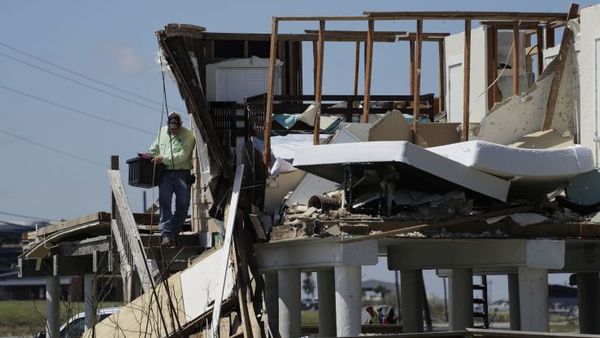 In the wake of Hurricane Maria and the October 2017 wildfires that affected much of California, the IRS issued guidance on the impact these disasters could have on employers, and the relief being granted.
In the wake of Hurricane Maria and the October 2017 wildfires that affected much of California, the IRS issued guidance on the impact these disasters could have on employers, and the relief being granted.
When natural disasters or other personal emergencies strike, employees may seek financial relief by tapping into their retirement plans. Enter the hardship distribution.
Hardship distributions, when permitted by the Plan document, allow employees to withdraw from their retirement account as long as they can provide proof of financial hardship.
These distributions are subject to federal and state income taxation, and if the employee is not at least 59 ½ years old, are also subject to an additional 10 percent early withdrawal penalty. The amount distributed must not exceed the amount of the financial need, but may be grossed up for taxes and penalties so as not to create any additional financial burden.
The Internal Revenue Service provides the following guidance for what constitutes an allowable financial hardship:
- To pay for unreimbursed medical expenses for plan participants or their spouse or dependents.
- To purchase a plan participant's personal residence, excluding mortgage payments.
- To pay college tuition and related post-secondary education costs such as room and board for the next 12 months for a plan participant, spouse, dependent or child who is no longer a dependent.
- To make payments necessary to prevent eviction from a plan participant's personal residence, or foreclosure on the mortgage of a principal residence.
- To pay funeral expenses for plan participants and the spouse, children, dependents, or beneficiary.
- To pay for repairs to the plan participant's principal residence if the repairs fall under the IRS's description of a casualty loss. The damage must be from an event that is sudden, unexpected, or unusual.
Common pitfalls
Although the reasons constituting a financial hardship are clearly defined, there is still a fair amount of judgment that is required on the part of the plan sponsor. Oftentimes, the plan sponsor is responsible for reviewing the financial hardship and determining whether or not it sufficiently meets the criteria.
Plan sponsors should carefully review their plan document and service agreements with recordkeepers and custodians to be clear on which party is responsible for reviewing the distribution request.
If the plan sponsor is responsible, they should retain support for the distribution, including the source documents provided by the employee (medical bills, eviction notice, etc.).
In the event that the service agreement with the recordkeeper or custodian requires that entity to review the application, the plan sponsor should ensure that this information is retained by the service provider and could be sufficiently produced in the event of an audit.
The plan sponsor is ultimately responsible for ensuring these distributions are properly authorized, even if some services are outsourced to a third party.
Disaster relief
In the wake of Hurricane Maria and the October 2017 wildfires that affected much of California, the IRS issued guidance on the impact these disasters could have on employers, and the relief being granted.
IRS Announcement 2017-15 provides relief to victims of these disasters by allowing for a temporary suspension of some of the requirements the plan sponsors would normally be subject to.
Employers who are located in an area that was affected by one of these disasters may be permitted to ignore the requirement to verify the financial hardship of an employee who has requested a distribution.
Although the six-month period following a hardship distribution is typically restricted from pre-tax employee contributions, hardship distributions that were related to Hurricane Maria will not be subject to this requirement.
As always, plan sponsors should still act in the best interest of plan participants and, when possible, document these efforts.
Plan sponsors may want to offer their employees the ability to access the funds in their retirement account in the event of a financial emergency. One way to do this is to incorporate an allowance for hardship distributions into the retirement plan's Plan document.
When executed properly, hardship distributions can be a great benefit for employees facing financial difficulties in the face of an unexpected life event.
However, plan sponsors must understand the fiduciary obligation of administering these distributions can be extremely complex and act accordingly.
Shawn P. Huxley, CPA, MSA is a Director at Chestnut Hill, MA CPA firm, Samet & Company PC and can be reached at 617-731-1222 or [email protected]
James Alexander is a Supervisor at Samet & Company PC and can be reached at 617.731.1222 or [email protected]
© 2025 ALM Global, LLC, All Rights Reserved. Request academic re-use from www.copyright.com. All other uses, submit a request to [email protected]. For more information visit Asset & Logo Licensing.







